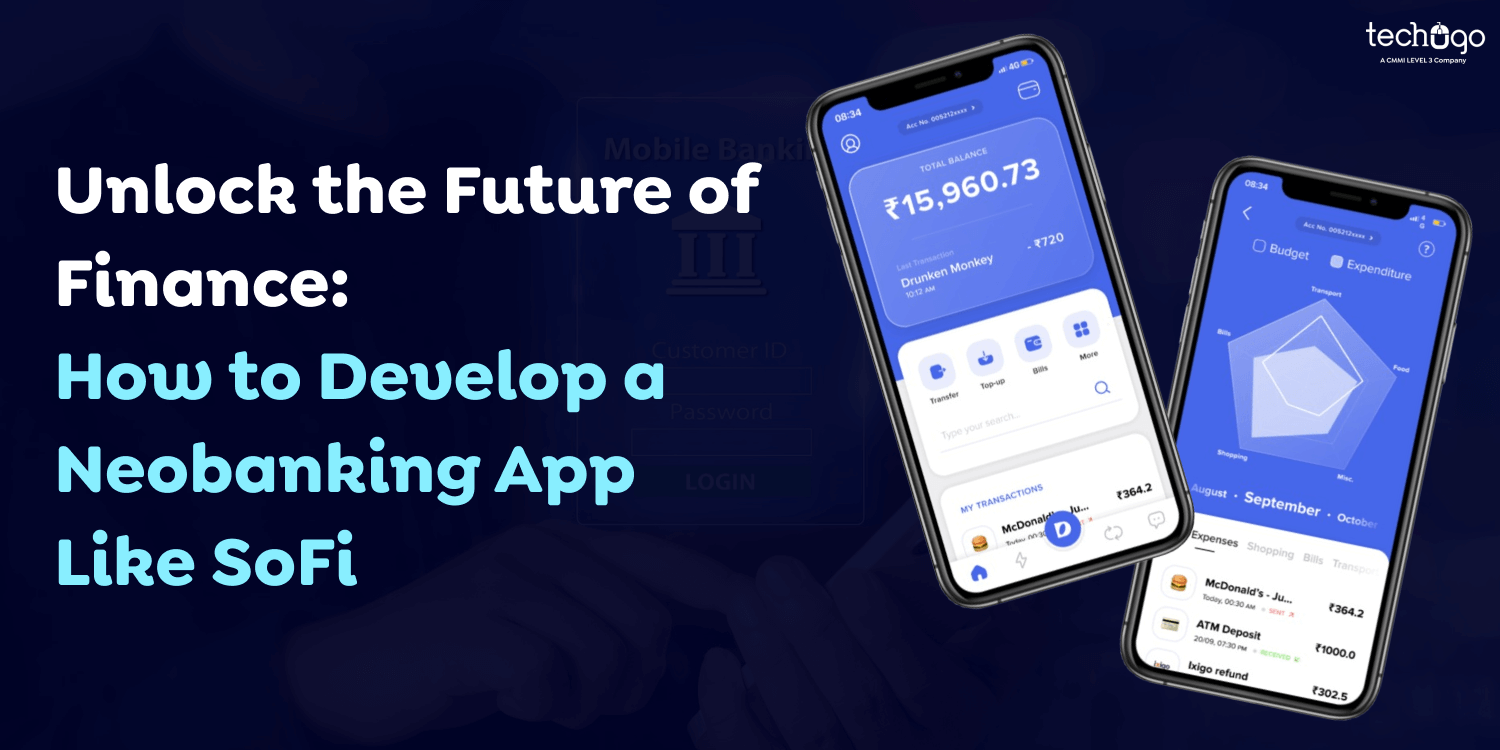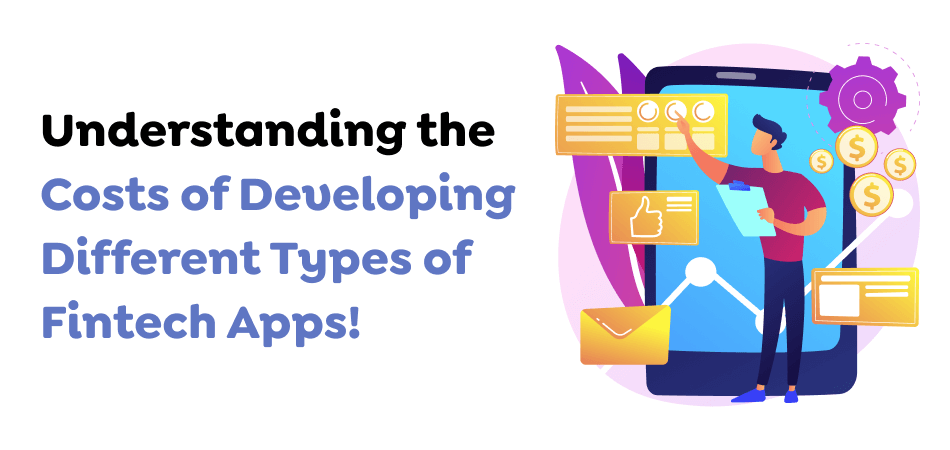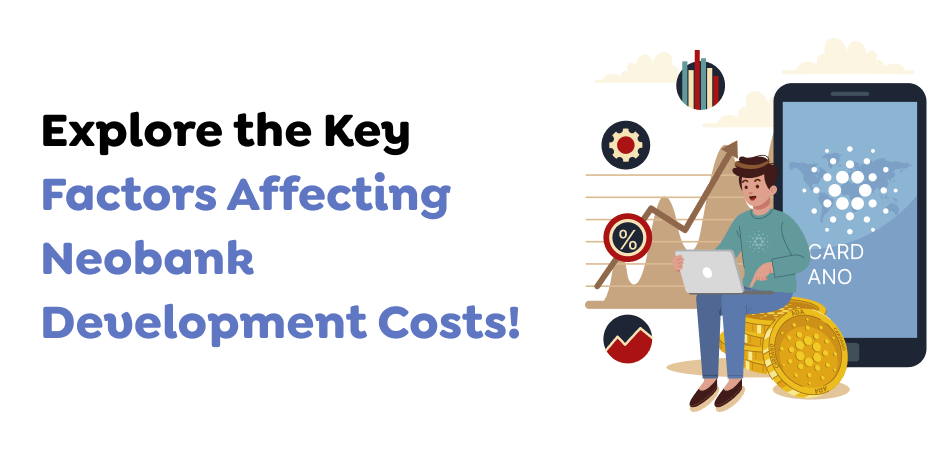11 Nov 2024
Unlock the Future of Finance: How to Develop a Neobanking App Like SoFi
Matthew Connor

Entrepreneurs’ increasing interest demands that they know how to build an application that uses the Neobank concept. However, before proceeding to the app’s design, it is crucial to understand the concept thoroughly.
The fintech industry has a new term causing a buzz these days—NEOBANK. This term is growing in popularity and attention in all sectors. In the media or news, we see this word all over the place. Are we conscious of this idea?
Let’s examine these payment apps in more detail. New products appear on the market every day. However, Neobanking has brought chaos to the fintech market and greatly facilitated the process of providing financial services, paving the way for innovative solutions such as apps like SoFi.
Let’s start by understanding the meaning behind Neobank.
How to Develop a Neobank App Like SoFi: A Step-by-Step Process

If you’re thinking of developing a neobanking app similar to SoFi, this step-by-step process will help you through the process:
1. Conduct Thorough Market Research
Before beginning any project, it’s essential to do thorough market research to assess the need for apps like SoFi and determine gaps in the market that your app can help fill. This involves analyzing market trends, competitor offerings, and consumer behavior. This will give you valuable insight into the features and services you offer. This will help you identify the SoFi’s intended audience and their preferences, financial habits, and specific needs, allowing you to modify your app to satisfy them and stand out in a competitive market.
2. Develop Concept and Design
In light of your research on the market, create an unambiguous and complete idea for your Neobank application. This includes defining its goals, identifying the intended audience, and defining the essential features distinguishing it from competitors. Take note of the particular needs your app is addressing and how it can benefit the users. After a clear idea, you can start designing your application’s user interface (UI) and user experience (UX).
Make sure that the layout is user-friendly and visually appealing. It should also be simple for users while considering the concepts of accessibility and inclusiveness. Try your app by utilizing a small number of users to get feedback and make the necessary adjustments before submitting it. This testing method can help you create an enjoyable and seamless customer experience.
3. Build Your Neobanking App
Once you’ve established a concept and design and have a clear idea of what you want to achieve, it’s time to start designing your Neobank application. Select the appropriate technology stack and programming language that best fits your app’s needs. You may consider using tools or frameworks designed explicitly for neobanks, such as SoFi. These tools can speed up the development process and guarantee that your app complies with the regulations.
It is also essential to consider security measures and data protection when developing your application because financial information transactions are susceptible. Regularly test while creating your app to find possible bugs or glitches and fix the issues promptly.
4. Integrate Third-Party Services Efficiently
If you’re building apps like SoFi, you’ll likely need to connect to various third-party services, such as payment gateways, identity verification tools, or personal management tools for financials. It is essential to select the services you use and ensure they are compatible with your app’s overall goals and security requirements.
Look into API-driven integrations, which allow seamless communications between your application and third-party service. This will give your customers an enhanced and practical user experience.
5. Adhere to Legal and Regulatory Standards
As a financial institution, your Neobank app must comply with various legal and regulatory standards set by government agencies. These could include privacy laws about data, anti-money laundering laws, and consumer protection legislation.
Keeping yourself updated regarding these standards and incorporating them into the development process is vital. Not only will this guarantee conformity, but it will also create trust with your customers.
6. Launch, Monitor, and Iterate
Once you’ve developed your app and it is ready to go live, you can launch it on the marketplace. Make a plan for a planned launch focusing on marketing campaigns to reach potential customers and generate excitement about your Neobank app. Monitor user feedback and track the app’s performance to find improvement areas.
Regularly release upgrades and brand-new functions in response to customer needs, market trends, and technological advances. This method of continuous improvement will keep your neobank app competitive and relevant in the constantly evolving fintech world.
Also Read : How to Build an App Like Waze: Key Features and Development Process
How Much Does Neobank App Development Cost?

The cost of creating a Neobank application like SoFi could vary greatly depending on the features you decide to integrate, the overall dimensions of your app, and the location of the team working on it. We’ve listed the costs of developing apps like SoFi below to help you understand the required financial commitment.
1. Initial Planning and Market Research
Cost: $5,000 – $20,000
Planning and conducting market research is crucial in establishing the business model for the application to be led after SoFi before programming starts. This phase also involves defining your market, studying competitors, and understanding laws.
2. UX/UI Design
Cost: $10,000 – $50,000
It Is accessible and easy to use, performing to make the app successful. Wireframes, prototypes, complete designs for every screen, and the flow of users throughout the app are included in the price.
3. Back-end Development
Cost: $50,000 – $200,000
Back-end development focuses on creating server APIs and databases and integrating various banking services. It is essential that it be done while adhering to the most secure security and protection of data rules. This is why it functions as the basis of your application and does all the essential tasks.
4. Front-end Development
Cost: $30,000 – $100,000
It is your user’s main interface, so it needs to be quick, responsive, and easy to use. Prices may vary depending on whether you use native or cross-platform technologies like Flutter for development.
5. Regulatory Compliance and Security
Cost: $20,000 – $100,000
Compliance with financial regulations and ensuring security can be among the most costly elements of Neobank app development. Therefore, it is crucial to ensure that security procedures, inspections, compliance, and more are secure.
6. Third-party Integrations
Cost: $5,000 – $50,000
Integrating third-party services, such as payment gateways, payment processing, credit score checks, and KYC verification, is vital. Based on the costs of the company that is charging each integration, the price of the whole process could be raised.
7. Testing and Quality Assurance
Cost: $10,000 – $40,000
Rigorous testing is needed to ensure the application works as planned and without bugs. This includes a range of tests, such as user acceptance and input integration.
8. Marketing and Launch
Cost: $10,000 – $100,000
The cost of marketing your app could vary significantly depending on your selected approach. The effectiveness of your marketing is contingent on the success of your launch and the success of reaching the desired users of the app.
9. Continuous Maintenance and Updates
Cost: $10,000 – $50,000/year
We’ll have to regularly improve the app following its launch date to add new features, make security updates, and ensure compliance with any changes to rules and regulations. In addition, regular maintenance is needed to ensure that the application is running smoothly and effectively manages users’ input.
10. Total Cost
Based on the amount and size the app is intended for, the cost to develop an app in Canada like SoFi or creating a Neobank can range from $100,000 to $700,000. These reflect the huge cost of introducing an unsecured, legal, secure, and highly competitive Neobank application.
Also Read : Unlocking Efficiency: The Impact Of Apps Like Transit On Public Transportation
Costs of Development for Various Types of Fintech Apps

There are various applications, and the cost of developing these apps is below.
1. Digital Wallet
The fintech application that stores bank and credit card information and allows users to pay conveniently shows signs of growth. According to Bank of America, digital wallet usage will increase by more than 5.3 billion users worldwide by 2026.
Digital wallet apps include Square Cash App, PayPal, Google Pay, Samsung Pay, Venmo, PhonePe, and Paytm.
If you’re planning to develop an application to use digital wallets, the essential elements you’ll need are:
- Money transfers between banks, as well as Digital wallet
- Alerts and a history opens
- Utility payments like gas, electricity, etc.
- QR code retail traders to trade agreement
- Rewards and discounts
- P2P payments
- Secure authentication (PINs, biometrics, 2-factor)
The advanced features are Chatbot Support Spending Analytics, credit bureaus integration, and multi-currency currency support.
The basic version of creating a digital wallet may cost $15000 to $50000, and the premium version may cost between $10000 and $150000.
2. Trading App
The trading app allows you to manage portfolios of investments, including selling or buying commodities and provides immediate access to the stock market. Fintech-powered trading apps offer more open access to the capital markets and have also made it easier for retail traders to trade stocks.
Examples of these trading applications include JP Morgan, Webull, Fidelity Investment, FirstTrade, Zerodha, etc.
You’ll have to make sure that the fundamental functions of your trading application include
- User Registration
- KYC (Know Your Customer) conformance
- Real-time updates of market prices and trends.
- A mobile dashboard lets you look at portfolios, positions in the current market
- Trade Execution features: buy, sell, stop loss, etc.
- Fund transfers from the account of a banking institution, an app for trading
- Charting view of stocks
- Customer support
The advanced features in trading applications include a comprehensive analysis of the technical aspects, automated trading based on predefined guidelines, and custom-designed alerts and notifications in response to price fluctuations.
The price of the creation of a trading app is based on the Basic version: $30000 – $50000, and the Advanced version: $10000 to $200000.
3. Neo-banking App
Neo-banking applications are digital-only fintech services that provide banks with banking services without physical branches. The market growth of NEO banks is predicted to occur at an annual percentage of 13.15 % from 2028. This growth is fueled by customers’ need for banking services that are available 24/7 and customized financial products.
A few examples of neo-banking applications include Nubank, Monzo, Revolut, and Chime.
Essential Features of a Neo Banking App
- User Registration
- KYC (Know Your Customer) conformance
- Live updates on market prices and trends.
- A mobile dashboard for displaying portfolios and current positions.
- Trade Execution features: buy, sell, stop loss, etc.
- Money transfers into the account of the bank and then back to the trading application
- Charting view of stocks
- Customer support
The trading app’s advanced features include tools for recording and budgeting expenses, savings goals for virtual cards as savings goal trackers, AI-powered financial expenditure information, and investment guidance.
The cost of creating a Neo banking application varies between two versions: the Basic Version, $40000- $60000, and the Advanced Version, $150000-$250000.
4. P2P Lending App
A P2P lending application allows loans and credit between two equal partners. It also removes third parties like banks, financial institutions, or other creditor institutions. These apps assist companies in ditching the traditional loan options and instead taking advantage of easy and low-interest loans. It is predicted to increase to USD 804.2 billion by 2030 (CAGR of 29.1 %) 2022 between 2022 and 2030. Crowdfunding lending apps are alternatives to lending apps, which are growing in popularity.
LendingClub, Upstart, Funding Circle, Peerform, Avant, Keeva, and StreetShare are a few examples of P2P lending applications.
Essential Features of a P2P Lending App
- Secure sign-up/sign-in process.
- Multi-factor authentication.
- Uploading documents, along with KYC verification
- Compliance with local and international financial regulations and rules.
- Full loan option, including filters
- Profile and creditworthiness of the indicators used by the borrower
- Current-time information about the loan availability
- Intuitive application form.
- Document management
- Loan approval Status tracking
- In-app communication between borrowers and lenders
- Automated repayment schedules
- Loan Calculator
Sophisticated features comprise credit score analytics, connections to credit bureaus, and risk profiler.
The cost for developing P2P lending apps can range from $20000-$50000 in the Basic version and $75000 to $150000 for advanced versions.
5. Mobile Banking App
Banks use them extensively. Each bank (small, medium, and large) has its mobile application, creating pieces like statements and balance checks, from $ 30000 to $100000 for the base version and $150000 to $500000 for credit and debit cs.
Mobile banking applications include Wells Fargo, Capital One, Citibank, Huntington Bank, and the BoFaML mobile banking app.
Essential features of a Mobile Banking app include
- Check account balance
- Transactions that have occurred in the last few days
- Statements from banks can be downloaded and accessed.
- Funds Transfer
- Bill Payments
- Loan management
- Credit/Debit card management
- Alerts you instantly for transactions
- ATM Locator
- Customer Support using messages in-app
- Device Authorization
- Sessions time out
- 2-Factor login
- MPIN login
The app’s advanced features for mobile banking comprise Biometric Login tools for tracking budgeting, spending, and financial plans, alerts for suspicious activity, payment via contactless, Rewards Point management, investment services (inbuilt Mutual funds and stocks, as well as PF accounts), and a customized dashboard.
The cost of developing a Mobile banking application varies between $30000 and $100000 for the basic version and $150000 to $500000 for the advanced version.
6. Cryptocurrency Wallet
Mobile apps are famous for cryptocurrency because they ensure that transactions are safe, secure, and anonymous. Crypto wallets protect your data and allow secure transactions with cryptocurrency. The main reason for adopting cryptocurrency is its massive economic benefits.
Examples of cryptocurrency apps include Coinbase, Kraken, Binance, Gemini, eToro, and CoinDCX.
If you plan to create the cryptocurrency-based wallet app of your choice, the cost will be determined by the following characteristics.
- Private Key Storage
- Advanced encryption methods
- QR Code scanner to scan keys and wallet addresses for public use.
- The wallet supports a range of crypto within one wallet
- Prices in real-time for cryptocurrency on exchanges
- Alerts on the status of transactions or price changes
- Integrated payment gateways for buying/selling digital assets.
- Logout function that is automated to provide greater security
Advanced features include the API connection, backup and recovery, Advanced charting and graphing programs, historical data, etc.
Cryptocurrency wallet development costs between $25000 to $60,000 to create the primary application. However, you’ll need to spend between $150000 and $200000 to get a more advanced version.
7. Insurance Tech app
An Insurtech application uses technology to access insurance products much more quickly. In 2024, insurance apps will be able to support health, medical term, and life insurance, motor vehicle insurance, and property insurance. Utilizing the most recent data analysis AI as well as cloud-based technology, Fintech for insurance (insurtech) is a new source of innovative insurance options.
Examples of applications that use Insurtech include Lemonade, Hippo, and Planto.
Essential Features of the Insurtech Apps include
- Personalized Policies module using AI
- Claim processing module
- Claim assessment
- Policy management
- Online premium payment
- Policy surrender module
- IoT Telematics (for applications related to automobile insurance)
- Fraud Detection
- Customer Support and Chatbots
Advanced features include tools that help educate customers, customize product insurance, premium calculators, etc.
The development costs for the Insurtech App vary between $35000 and $60000 for a typical insurance application. A more advanced insurance app with sophisticated features can cost anywhere from $17000 to $250000.
8. Robo Advisor App
Robo Advisor App is a digital platform that provides automated financial planning with algorithms that do not require human supervision. The Robo Advisor app collects information from clients about their economic condition and provides their financial goals for achieving their goals in the coming years. The data is analyzed to advise on how to invest in different categories of assets and remove emotional biases.
A report from Grandview Research projects the robo-advisory market to grow by an annual rate of 30.5 % (2024-2030). This is a fantastic opportunity for those looking to enter the market using the robo-advisor application.
Examples of Robo Advisory apps are Weathfront, Betterment, M1 Finance, and Ellevest.
One of the most significant aspects are
- User upon boarding (The application can collect the most crucial information needed to provide personalized advice)
- Set the goals and the risk tolerance.
- Automated Investment portfolio management
- Connect to financial data sources.
- Tax management
- Rebalancing
- Stock APIs for up-to-date info.
- Set up alerts to monitor the progress of your portfolio.
- Analytics and Reporting
- Security Features
Advanced capabilities comprise accounts aggregation, an expert panel, and the possibility of planning retirement.
An insurance App’s development costs range from $5000 to $55000 for the basic version, whereas an advanced version could cost between $100000 and $300000.
9. Investment App
A financial application for investment in the technology (fintech) industry was developed to help users manage their portfolios, including investments and other asset classes, via their mobile apps. Demand for investment applications is growing, with forecasts of 19% annual growth from 2032.
Investment apps include Acorn, Ally Invest, Charles Schwab SoFi and Acorn
Basic Features of an Investment App
- Registering and Onboarding
- Profile management
- Account setup
- Find ETFs, investment products, also known as mutual funds
- Portfolio management
- Link bank account
- Fund withdrawals
Advanced features include market analysis, a sophisticated tool to trade, multi-brokerage accounts management, and trade algorithms.
The cost of the Insurtech App varies from the Basic version, which varies between $30000 and $40000—advanced version: $60,000 or $200000.
10. Payment Apps
The app provides an easy mobile interface to accept and initiate payments. Payment apps also seamlessly transfer data between payment network providers, such as ACH, SWIFT, and card networks (VISA, MasterCard, American Express). Data storage is compliant with PCI DSS regulations to safeguard cardholders’ sensitive data.
PayPal, Venmo, Zelle, Samsung Pay, Square Cash, Apple Pay, Gpay, and even Wise are some examples of these payment apps.
Basic functions of Payment Apps are
- Payment transfer (domestic and international)
- Transaction history
- Fund Management
- The device’s identification and authorization
- Security features
- KYC module
- Adding personal/Business Info
- Card Management
- Billing and Invoicing
- Account Balance updates
- QR code support
Advanced features offered by payment apps include an audit trail and integration with accounting systems or POS systems, support for multi-currency transactions, AI-based fraud detection, and more.
A basic version of the payment application is priced between $50000 and $75,000. The more advanced payment processors cost between $150000 and $50000.
Also Read : Revolutionizing Fintech: The Role of React Native App Development
Factors Affecting the Cost of Neobanking Development

Find out the elements that affect the price of this neobanking innovation:
1. App Type
The price of apps like SoFi will vary based on the specific business sector in which it is to be made. The cost will also differ according to the industry vertical: a banking application, digital payment wallet, P2P lending platform, or insurance Fintech (insurtech). Core banking apps are more costly than lending platform applications. Trading apps with algorithms will require more complicated layers and are more expensive. Robotic advisors with automated systems with integrated artificial intelligence and machine learning abilities can be costly.
2. Features and Complexity
Features are the main cost drivers in apps like SoFi. The more features you include in your fintech application, the more you will put into your wallet. More complex features will require more time to develop and raise the price. Multiple-factor authentication KYCs Secure card management and multiple currency payment integrations are a few options that can increase FinTech application development costs. But, most fintech apps, like those by banks, electronic payment, or online trading, will require these features to comply with regulatory requirements.
The degree of difficulty of a mobile application is defined by its capabilities, functions, functionality, and interaction, which are contained in the coding structure.
Another way of assessing complexity is to consider the obstacles the programmer has to face when developing apps like SoFi for mobile devices. The more difficulties a programmer must overcome while creating the app, the more expensive it will be. A mobile application for fintech is usually more complicated than a task tracking application or a list of tasks.
3. UI/UX Design
Its user interface (UI) and the user experience (UX) design will determine the aesthetic appeal and user-friendliness of apps like SoFi. Graphics, animations, custom designs, and new design trends are some elements that impact the price. Fintech companies must be aware of the user interface regardless of how beneficial your products are or the number of features your application has. An unprofessionally developed UI/UX may make it impossible to use your app.
For example, fintech-based trading or investment apps should be designed with a user-friendly interface since these apps could need constant use, and therefore, the complexity of the UI/UX may deter users.
Conclusion
Developing apps like SoFi requires a strategic approach with an in-depth understanding of the market and a significant investment in time and money. By focusing on the key aspects, using successful monetization strategies, and selecting the most suitable mobile app development company in Canada to build with, you will be able to create an app that is successful in the financial sector. The estimated cost for developing an app clone based on SoFi can range between $200,000 and $500,000, depending on the extent of the features and complexity. If executed carefully, your app could achieve an excellent return on investment and establish an essential position in the Fintech sector.
Get in touch with Techugo to transform your fintech idea into a powerful app and elevate your business in the financial industry!
Get In touch
We are excited to here from you and let’s start something special Together. Call Us for any inquiry.
Write us
sales@techugo.caJust a call away
About you




